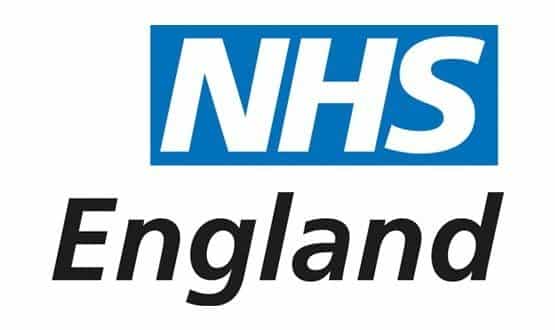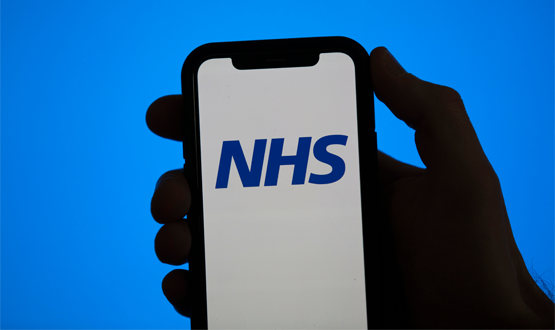NHS England sets out seven short-term digital priorities
- 4 July 2023

NHS England has informed NHS trusts and ICBs of its list of seven short-term digital priorities, all focused on secondary care and elective recovery, with an eye firmly on the next General Election.
The so-called 6+1 priorities, issued in June with minimal advance notice or consultation, cover strictly short-term objectives that NHS England rather improbably says can be deployed a light speed, some in a matter of months, before the next General Election, expected in autumn 2024.
The first priority is Smart System Control, described as rollout and optimisation of ICS level dashboards to support capacity management and care planning. Some 50% of ICSs are said to so far have these capabilities in place.
Kent and Medway ICB is identified in briefing materials seen by Digital Health News as having benefitted from using Smart System Control to improve real-time operational management of ambulance handover delays and discharge. No timetable is given for deployment.
The second priority is Electronic Bed and Capacity Management (EBCM), focused on roll-out across acute trusts enabling live, real-time data on bed status and patient flow. According to NHS England 56% of beds so far have EBMS.
The guidance says that Maidstone and Tunbridge Wells trust saw a 45% reduction in patient transfer times as a result of introducing EBCMS, gaining 2258 hours of nursing time monthly. No sources are cited for the claimed benefits.
The briefing materials suggest EBCM can be fully rolled out across the NHS within just five months.
The third priority is Digitised Records and Workflow, otherwise known as Electronic Patient Records (EPR), to support increased productivity, quality and safety.
NHS England claims ‘Productivity has been increased by up to 13% in the most digitised trusts’. Again, no source is cited for the claimed benefits.
The document states that 88% of secondary care trusts have EPRs in place and that these can be fully deployed in 18-24 months.
The fourth priority is Optimising Waiting Lists, described as ‘data driven decision-making platforms optimising waiting list management and improving theatre productivity’.
Chelsea and Westminster, which is named as the reference case, is said to have seen theatre utilisation improved from 73% to 86% and a 56% reduction in cancellations.
Chelsea and Westminster has previously been named by NHS England as a reference site for Palantir’s Foundry analytics platform under a pilot programme funded by NHS England.
NHS England’s briefing materials state it will take seven months to roll out a platform [thought to be Palantir] nationally to try to optimise waiting lists across the country.
The fifth priority is Dynamic Discharge, described as rolling out shared system digital tools to help multidisciplinary teams effectively plan and track hospital discharges.
One trust, NTHFT, is said to have seen a 25% improvement in long length stay (21+ days) two months post implementation. The briefing document says there were pilots in 12% of acute trusts by March 2023, and that the capability could be deployed to all trusts in a credulity stretching timescale of just 3 months.
The sixth priority is named as AI diagnostic support, described as accelerating rollout of promising AI imaging tools to reduce diagnostic backlogs, save clinicians time and speed-up treatment.
The document names Musgrove Park as the reference site saying that AI-reporting of chest x-ray for detecting lung cancer reduced the time to CT from 7 to 2.8 days. It goes on to say 28 of the 42 ICBs are using or testing at least one AI Award product [funded by the former NHSX AI Lab].
The seventh, or plus one, priority is Patient Portals App Programme, described as enabling patients to take control of their care through the NHS App including managing appointments and accessing resources to support better care.
An un-named medium sized trust is claimed to have saved more than £1m per annum savings, higher patient satisfaction and 30% lower DNA figures when booking appointments through patient portals. It goes on to claim that 19% of acre non-specialist trusts have a patient portal.
NHS England is currently assessing bids for up to £70m of investment in patient portals, while a further £21m has recently been announced for AI investment, but details are unknown for any funding that may be made available for the other priority areas.
Commenting on the 6+1 priorities Paul Jones, vice-chair of the CIO Network and CDIO at Leeds Teaching Hospitals NHS FT, said: “It’s unfortunate that once again national colleagues have jumped to a set of solutions without engaging with the front line and even more disappointing that the priorities don’t align with the challenges that the front line is facing.
“That nationally we need to fill the gap for the 10-15% of acute trusts without an EPR is clearly a sensible initiative, I’m afraid the rest fall into the category of an assumption nationally that one-size fits all and that technology is the answer, even if we’ve not worked out the problem.”
The answer is not always more technology, he suggested: “For bed-management, the biggest improvement we could make isn’t technology and is really simple, it is to re-employ the clerical staff across hospitals we’ve had to let go to manage cost-constraints, a new system, without the staff to enter data in near real time will be a waste of money.”





5 Comments
Hi – interesting to see this report – can you point to where the guidance has been published?
I work in Digital Transformation in NHS England and have not heard about this – I don’t assume I’m informed about everything, but it would conflict with digital transformation guidance published late last year and early this which my team is currently working through. Many thanks.
What’s this ‘if true’ business Joe? This isn’t ChatGPT, I didn’t just ‘hallucinate’ the story.
Joe’s “if true” comment probably indicates a common mistrust of documents based on “evidence” which isn’t shared so cannot be easily evaluated. Politicians do this all the time, but we don’t expect civil servants to use this approach – especially when public trust is at such a low ebb.
Hi Jon, there doesn’t seem to be a published document with this anywhere on the NHSE site, no one else seems to be talking about this but I know anecdotally that it’s being talked about at ICS level, it would be good to triangulate the report.
More like a death rattle than a coherent strategy, if true.
Comments are closed.